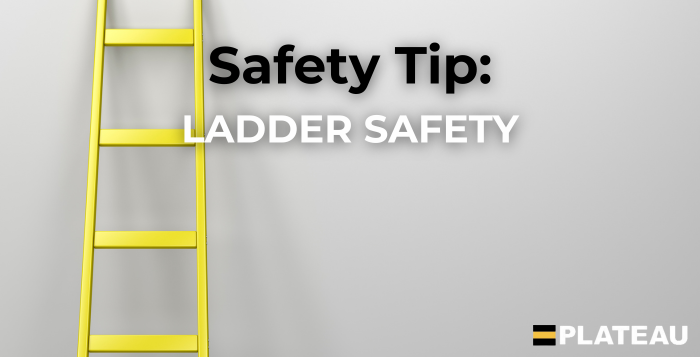Plateau Excavation

Ladder Safety: Best Practices for Safe Use
Ladders can pose serious risks if not used correctly. In fact, a recent study found that ladder-related falls account for approximately 20% of all construction fall injuries. To prevent accidents, it’s crucial to follow proper ladder safety guidelines.
Proper Storage
- Store ladders in a sheltered area, away from extreme heat, harsh weather, and corrosive materials.
Inspection Checklist
Before each use, inspect your ladder for the following:
✅ Structural damage, such as broken or missing rungs, cracked side rails, or corrosion.
✅ Defective or loose components.
✅ Proper industrial-grade rating (minimum 1A for heavy-duty use).
⚠️ If a ladder is damaged or fails inspection, remove it from service immediately and dispose of it properly.
🚫 Prohibited: Metal frame ladders are not allowed.
🆔 All ladders must be permanently marked with the owner’s identification.
Safe Setup Guidelines
- Extension ladders must extend at least 3 feet above the landing surface.
- Position the base 1 foot away from the wall for every 4 feet of height to maintain a 75-degree angle.
- Secure the ladder at both the top and bottom at all times.
- Keep the ladder inside the trench box when working in a trench box.
Ladder Usage Tips
✔️ Always face the ladder when climbing or descending.
✔️ Maintain three points of contact at all times.
✔️ Use a tool belt or hoist instead of carrying items while climbing.
🚫 Avoid These Unsafe Practices:
❌ Never jump from a ladder.
❌ Do not climb above the fourth rung from the top of an extension ladder.
❌ Avoid using a ladder in rain, strong winds, or lightning conditions.
❌ Ladders should never be used as horizontal platforms, runways, or scaffolds.
❌ Always retract extension ladders before transporting them.
By following these safety precautions, you can significantly reduce the risk of ladder-related injuries and ensure a safer work environment.